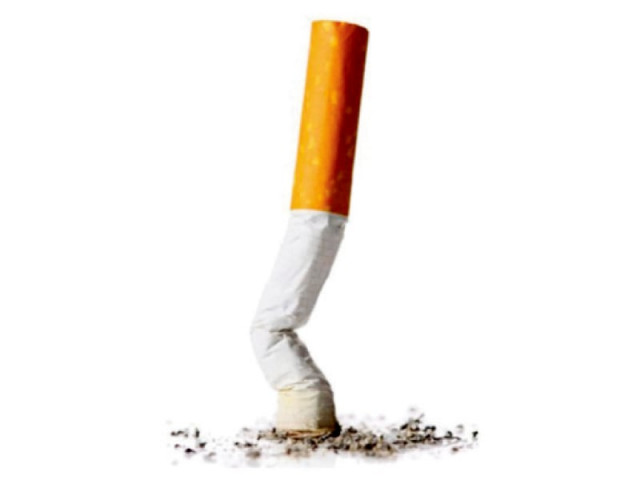‘Need to restrict tobacco use’
19% of population under 15 indulges in smoking, report states

World No Tobacco Day was observed in Pakistan on Monday like other parts of the globe to create awareness in people about the hazards to health by smoking and medical complications caused by the use of tobacco items.
In Pakistan, 19 per cent of the people over the age of 15 years use tobacco in some form, and tobacco kills 118,000 people every year besides causing Rs615 billion worth of smoking-related illnesses per annum.
The country has placed a complete ban on advertisements of tobacco and tobacco-related products. The sale of loose cigarettes is prohibited as also are the display of banners and placards of cigarette brands at points of sale while selling cigarettes near an educational institution is outlawed.
Pakistan made a commitment in 2005 when it signed the World Health Organisation's (WHO) Framework Convention on Tobacco Control (FCTC), to reduce tobacco consumption and ensure the right of people to the highest health standards.
Globally, the tobacco epidemic is one of the biggest public health threats the world has ever faced, killing more than eight million people a year around the world. More than seven million of those deaths are the result of direct tobacco use while around 1.2 million are the result of non-smokers being exposed to second-hand smoke.
All forms of tobacco are harmful, and there is no safe level of exposure. Cigarette smoking is the most common form of tobacco use worldwide. Other tobacco products include water pipe tobacco, various smokeless tobacco products, cigars, cigarillos, roll-your-own tobacco, pipe tobacco, bidis, and kreteks.
According to a WHO report, water pipe tobacco use damages health in similar ways to cigarette tobacco use. However, the health hazards of waterpipe tobacco use are often little understood by users.
It added that smokeless tobacco use is highly addictive and damaging to health. Smokeless tobacco contains many cancer-causing toxins and its use increases the risk of cancers of the head, neck, throat, oesophagus, and oral cavity (including cancer of the mouth, tongue, lip and gums) as well as various dental diseases.
The WHO report says second-hand smoke is smoke that fills enclosed spaces when people burn tobacco products. There is no safe level of exposure to second-hand tobacco smoke, which causes more than 1.2 million premature deaths per year and serious cardiovascular and respiratory diseases. Almost half of the children regularly breathe air polluted by tobacco smoke in public places and 65,000 die each year from illnesses attributable to second-hand smoke.
In infants, it raises the risk of sudden infant death syndrome while in pregnant women, it causes pregnancy complications and low birth weight. It said that smoke-free laws protect the health of non-smokers and are popular, as they do not harm businesses and encourage smokers to quit.
Studies show pictorial warnings significantly increase people's awareness of the harms of tobacco use. Mass media campaigns also help reduce the demand for tobacco and convince people to stop using tobacco.
The WHO study further stated that tobacco taxes are the most cost-effective way to reduce tobacco use and health care costs, especially among youth and low-income people, while increasing revenue in many countries. An increase of tobacco prices by 10 per cent decreases tobacco consumption by about four per cent in high-income countries and about five per cent in low and middle-income countries.
Studies showed that when smokers become aware of the dangers of tobacco, most want to quit. Without cessation support, only four per cent of attempts to quit tobacco will succeed while professional support and proven cessation medications can more than double a tobacco user’s chance of successful quitting.
Published in The Express Tribune, June 1st, 2021.



















COMMENTS
Comments are moderated and generally will be posted if they are on-topic and not abusive.
For more information, please see our Comments FAQ